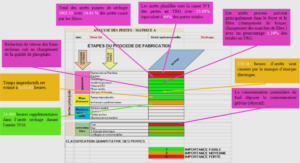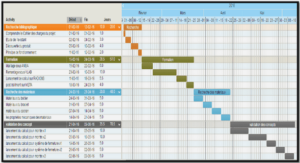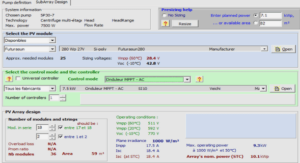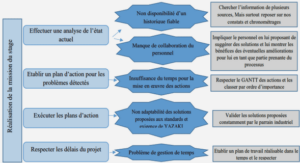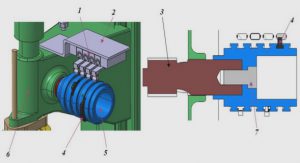Scanning electron microscopy analysis
INTRODUCTION
During the last decade, wood-plastic composites (WPC) have emerged as an important family of engineering materials. Compounding polymers with wood flour and wood fibers is a common practice and has been done in industry and studied by academics, to reduce cost and attain desired properties. Wood fibers can provide weight savings, higher specific tensile strength and modulus, good processing and low impact against the environment. These properties allow wood fibers to replace the conventional inorganic reinforcements as glass and carbon fibers. However, despite these attractive properties, the potential for use WPC in many industries including construction, automotive and decking has been limited for their high moisture absorption, high brittleness, low impact resistance, lower bending stiffness and mainly high density compared to the neat plastic. Poor mechanical properties are mainly due to the poor interfacial interactions between hydrophilic fibers and hydrophobic polymer.
Therefore, most studies in the area of WPC focus on improving the physical and mechanical properties of the composites by the improvement of interfacial adhesion between wood fibers and hydrophobic thermoplastics.
To supplement this deficiency in compatibility, several approaches have been used in the literature including the introduction of coupling agents or various other chemical and physical surface modifications.
Another promising approach to improve the mechanical properties such as interfacial strength is producing hybrid composites with the combination of wood fibers and several nano-sized particles like carbon nanotube, nanoclay, and cellulose nanocrystals. Indeed, nanoparticle exhibit high aspect ratio and high surface area, which can be beneficial to improve the interfacial interaction between fiber and polymer by increasing the contact surface with polymer and present into minor zone where the fibers cannot reach. Moreover, the abundance of functional groups at the surface of nanoparticles can offer new possibilities to the development of multifunctional materials (antibacterial and electrical conductivity) with the grafting of new groups. In the literature, many studies have found that a synergistic effect can occur between the wood fibers and nanoparticles like nanoclay (Zhao, Wang et al.
Traditional strategies for composite improvement
A strong fiber-matrix interface interaction is a challenge to improve adhesion and provide high mechanical properties of composites (Mohanty, Misra et al. 2001). Wood fibers are hydrophilic in nature which reduce their compatibility with hydrophobic polymer and increase water absorption of composite. To overcome this drawback of wood fibers and strengthening interfacial adhesion, the surface of the fibers can be modified by physical or chemical means (Mohanty, Misra et al. 2001, Kalia, Kaith et al. 2009, Mukhopadhyay and Fangueiro 2009). Several modification methods have been proposed in the literature such as alkaline treatment (Ichazo, Albano et al. 2001, Altun, Doğan et al. 2013), isocyanate treatment (Karmarkar, Chauhan et al. 2007, Petinakis, Yu et al. 2009), corona (Ragoubi, Bienaimé et al. 2010, Ragoubi, George et al. 2012) and plasma(Acda, Devera et al. 2012, Gibeop, Lee et al. 2013) discharge and chemical coupling with silanes (Pickering, Abdalla et al. 2003, Abdelmouleh, Boufi et al. 2007, Yanling Wang 2011) or maleic anhydride coupling agent (Kazayawoko, Balatinecz et al. 1999, Lai, Yeh et al. 2003, Sombatsompop, Yotinwattanakumtorn et al. 2005, Kim, Lee et al. 2007, Majeed, Hassan et al. 2014).
Challenge of nanocomposite dispersion
A better dispersion of nanoparticles is a key challenge to achieve desired performances of polymer nanocomposites. Therefore, it has been proven in many researches that mechanical and physical properties of nanocomposites were mainly governed by the degree of nanoparticles dispersion in polymer matrices (Pukánszky and Fekete 1999).
To explain the interfacial adhesion mechanism between the fibres and polymer matrix, several theoretical approaches have been proposed in the literature(ROCHE, #160 et al. 1991, Ragoubi 2010) such as mechanical theory(McBain and Hopkins 1924) (based on surface roughness), thermodynamic theory(Khoshkava and Kamal 2013) (based on wetting parameter and surface energy), diffusion theory(Voyutskii and Voiutskii 1963) (based on the affinity between fillers and polymer) and chemical theory(Peng, Dhar et al. 2011) (based on the formation of chemical bonding with or without using coupling agent). In our study, we have limited in chemical approach to understanding the effect of dispersion in interfacial adhesion between fillers and matrix.
Potentiality of using nanofillers in HDPE nanocomposites
Reinforcement of nanocomposite with organic and inorganic nanoparticles has been reported in the literature by many researchers. Indeed, a good improvement of polymer properties can be achieved with typically 3 to 10 wt.% nanoparticles such as clays, carbon nanotubes and nanocrystalline cellulose (Wang 2008, Islam, Masoodi et al. 2013). Therefore, many investigation studies have been carried to understand the effect of addition of nanoparticles on the mechanical and physical properties of polymers.
Water Absorption uptake
The water absorption of various composites was measured according to ASTM D-570- 98.Three specimens for every composite with dimensions of 127 x 12.7 x 3.1 mm, were dried in an oven for 24 h at 50°C and then cooled at room temperature under vacuum. The initial mass for each sample was evaluated and then the specimens were immerged in a container of distilled water maintained at room temperature. To measure the water resistance of different composites, the specimens were removed from water, wiped with paper, weighed the mass gain and then immerged again in water. These steps were repeated for different measurement during 2h, 24h, 1week and 2 weeks. All mass measurement was done using an instrumental balance with a precision of 0.0001 g. The equation used to calculate percent water absorption was as the following:
Mechanical properties
Figure 3.16 and Figure 3.17 show the results obtained for tensile and flexural tests of various composites using different fibers as fillers (wood flour, sisal and NCC). The flexural modulus and flexural strength were increased by 105 % and 106% respectively with addition of 30% wood flour and 3% of CA2. This result is much higher than the one obtained for the HDPE/NCC nanocomposite. This can be due to the agglomeration of NCC but also to have a good comparison the some content of filler should be studied using 10 % of wood flour for example.
CONCLUSION
In this work, a successful experimental protocol to obtain NCC/HDPE nanocomposites was developed. Optimum temperature and processing condition were obtained with mixer processing temperature of 160◦ C, one step processing method and injection processing temperature of about 180◦C. The results showed that adding up to 10% of NCC has no significant effect of torque values and the viscosity of polymer matrix which is beneficial to maintain the viscosity and melt behaviour of polymer.
Flexural tests were carried out to study the effect of adding NCC on the flexural strength and modulus of HDPE. Upon addition of 10 wt. % NCC there was an increase in about 26% of flexural strength and about 23% in flexural modulus were observed for composite containing 1% of CA2. The composition having high molecular weight compatibilizer (CA2) presented better results than that in the case of other compositions having low molecular weight compatibilizer (CA1). The same result was obtained by S. H. Kameshwari Devi (Devi, Shashidhara et al. 2010) for HDPE/nanoclay nanocomposite using different compatibilizer agents.
|
Table des matières
INTRODUCTION
CHAPTER 1 LITERATURE REVIEW
1.1 Wood plastic composite (WPC)
1.1.1 Interest of WPC
1.1.2 Failure of WPC
1.1.3 Traditional strategies for composite improvement
1.2 Hybrid wood nanocomposite
1.2.1 Nanocomposites based NCC
1.2.1.1 Polymer nanocomposites
1.2.1.2 Nanocrystalline cellulose (NCC)
1.2.1.3 Challenge of nanocomposite dispersion
1.2.1.4 Dispersion of NCC in plastic matrix
1.2.1.5 Processing of polymer nanocomposites
1.2.2 Potentiality of using nanofillers in HDPE nanocomposites
1.2.3 Hybridization effect of nanoparticles on WPC
1.2.3.1 Mechanical properties
1.2.3.2 Physical properties
1.3 Conclusion
CHAPTER 2 MATERIALS AND EXPERIMENTAL METHODS
2.1 Technical data of the materials
2.1.1 High-density polyethylene (HDPE)
2.1.2 Fillers
2.1.2.1 Nanocrystalline cellulose (NCC)
2.1.2.2 Wood flour and sisal
2.1.3 Compatibilizer
2.2 Methods of preparation and characterization of samples
2.2.1 Compounding processes for the HDPE composites
2.2.2 Manufacture of the HDPE composites
2.2.3 Characterization of Composite
2.2.3.1 Mechanical properties
2.2.3.2 Microscopy
2.2.3.3 Water Absorption uptake
CHAPTER 3 RESULTS AND DISCUSSION
3.1 HDPE/NCC nanocomposites
3.1.1 Optimization of processing parameters for preparation of HDPE/NCC/
CA1 blend
3.1.1.1 Effect of processing temperature
3.1.1.2 Comparison of one-step (direct mixing) and two-step
(masterbatch) procedures
3.1.1.3 Injection molding processing temperature optimization of the
HDPE/NCC
3.1.2 Flexural properties
3.1.2.1 Effect of processing methods
3.1.2.2 Effect of NCC content
3.1.2.3 Effect of type and concentration of compatibilizing agent
3.1.3 Tensile properties
3.1.4 Scanning electron microscopy analysis
3.1.5 Effect of NCC dispersion technique: water suspension and dry mixing
3.1.6 Water Absorption uptake
3.2 Hybrid nanocomposites
3.2.1 Mechanical properties
3.2.2 Water Absorption uptake
CONCLUSION
![]() Télécharger le rapport complet
Télécharger le rapport complet

